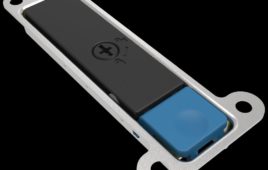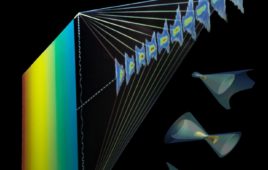Charter Communications last week urged regulators to limit geographic licensing of 3.5 GHz spectrum to areas “no larger than counties” as it prepares to enter the wireless market later this year.
The cable giant added in comments filed with the Federal Communications Commission that it will employ an “inside-out” strategy, shifting from indoor to outdoor wireless, in two phases.
“Charter is in the process of transitioning its wireless network from a nomadic WiFi network to one that supports full mobility by combining its existing WiFi assets with multiple 4G and 5G access technologies,” the company wrote in response to an FCC notice for regulating 3.5 GHz spectrum. “In navigating this technological transition, Charter is concentrating on an ’Inside-Out‘ strategy, initially focusing on advanced wireless solutions inside the home and office, and eventually expanding outdoors.”
The first step will begin this year with the operator offering its customers a mobile wireless service through its MVNO agreement with Verizon and utilizing Charter’s “extensive” WiFi infrastructure.
Charter, however, also hasn’t been shy about its interest in the CBRS band and is currently working with eight different vendors in Tampa, Fla., and Charlotte, N.C., for its 3.5 GHz mobility use cases. The operator is also testing a fixed wireless solution in the 3.5 GHz band in six different markets.
“In the second phase, Charter plans to use the 3.5 GHz band in conjunction with its WiFi network to improve network performance and expand capacity to offer consumers a superior wireless service,” the cable operator wrote. “Charter’s intended use of this band, however, requires rules facilitating new entrants’ access to this critical spectrum.”
The FCC is currently considering changes to regulations governing select licenses for the 3.5 GHz band that would increase license terms, enable license renewal, and expand the geographic area for Priority Access Licenses.
Industry association CTIA had previously filed comments asking the commission to modify the license areas to consist of traditional Partial Economic Areas (PEA) rather than Census tracts. In its most recent filing, Charter, countered that increasing the geographic licensing size to PEAs would limit access to the CBRS band to the largest incumbent wireless carriers.
“With larger license areas to cover, only those companies with national scale and an already significant wireless network presence throughout a PEA will be in a position to invest in expensive new licenses,” Charter wrote. “Indeed, should such entities require the certainty of PEA-sized service areas, they remain fully able to aggregate license holdings through the process of a fair and competitive auction of county-sized licenses.”
Charter also contended that smaller geographic license areas will speed up deployments.
“Importantly, smaller license sizes will enable new entrants to more efficiently leverage their existing infrastructure in those counties that encompass their networks. Utilizing existing networks would enable new entrants such as Charter to rapidly deploy 3.5 GHz radios throughout these county-sized licensing areas for the provision of wireless broadband service,” Charter added. “This results in more wireless service options with better throughput for more consumers in a shorter period of time.”
Filed Under: Telecommunications (spectrums)




